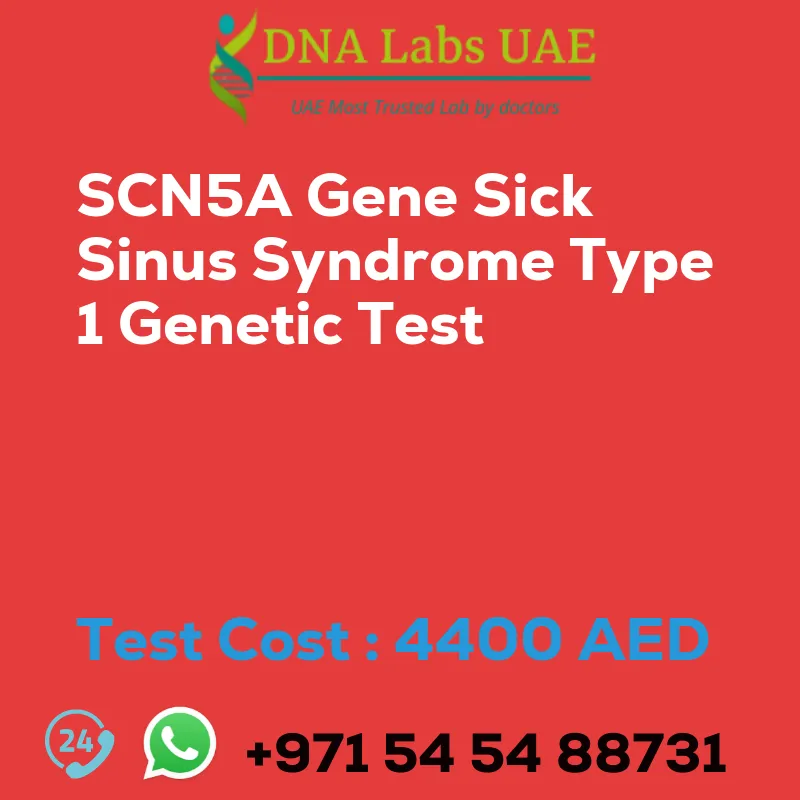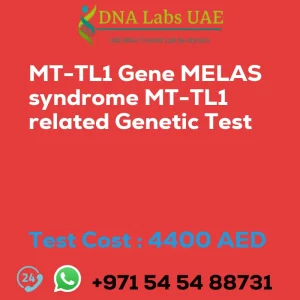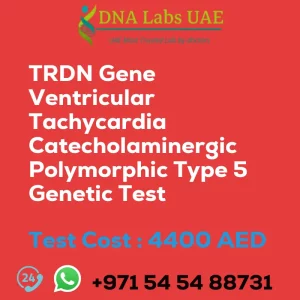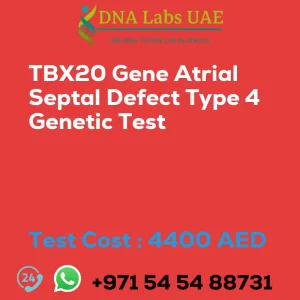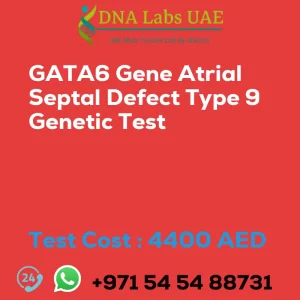SCN5A Gene Sick Sinus Syndrome Type 1 Genetic Test
Test Details
The SCN5A gene is responsible for encoding a protein called the cardiac sodium channel, which plays a crucial role in the normal electrical signaling of the heart. Mutations in the SCN5A gene can lead to various heart rhythm disorders, including sick sinus syndrome type 1. Sick sinus syndrome is a condition characterized by an abnormal functioning of the sinus node, which is responsible for initiating the electrical signals that regulate the heart’s rhythm. Sick sinus syndrome type 1 specifically refers to a form of the condition caused by mutations in the SCN5A gene.
NGS (Next-Generation Sequencing) genetic testing is a type of genetic testing that allows for the rapid and simultaneous sequencing of multiple genes, including the SCN5A gene. This type of testing can identify mutations or variations in the SCN5A gene that may be associated with sick sinus syndrome type 1. By performing an NGS genetic test for the SCN5A gene, healthcare professionals can diagnose sick sinus syndrome type 1 and provide appropriate treatment and management strategies for affected individuals. Additionally, this type of testing can also be used for genetic counseling and to identify other family members who may be at risk of developing the condition.
Test Name: SCN5A Gene Sick Sinus Syndrome Type 1 Genetic Test
Components:
- Price: 4400.0 AED
- Sample Condition: Blood or Extracted DNA or One drop Blood on FTA Card
- Report Delivery: 3 to 4 Weeks
- Method: NGS Technology
- Test Type: Cardiovascular Pneumology Disorders
- Doctor: Cardiologist
- Test Department: Genetics
- Pre Test Information: Clinical History of Patient who is going for SCN5A Gene Sick sinus syndrome type 1 NGS Genetic DNA Test. A Genetic Counselling session to draw a pedigree chart of family members affected with SCN5A Gene Sick sinus syndrome type 1 NGS Genetic DNA Test gene SCN5A
Don’t wait, get your SCN5A Gene Sick Sinus Syndrome Type 1 Genetic Test today at DNA Labs UAE. Our expert cardiologists and geneticists will provide you with accurate results and personalized treatment plans. Early diagnosis can make a significant difference in managing and treating sick sinus syndrome type 1. Contact us now to schedule an appointment.
| Test Name | SCN5A Gene Sick sinus syndrome type 1 Genetic Test |
|---|---|
| Components | |
| Price | 4400.0 AED |
| Sample Condition | Blood or Extracted DNA or One drop Blood on FTA Card |
| Report Delivery | 3 to 4 Weeks |
| Method | NGS Technology |
| Test type | Cardiovascular Pneumology Disorders |
| Doctor | Cardiologist |
| Test Department: | Genetics |
| Pre Test Information | Clinical History of Patient who is going for SCN5A Gene Sick sinus syndrome type 1 NGS Genetic DNA Test. A Genetic Counselling session to draw a pedigree chart of family members affected with SCN5A Gene Sick sinus syndrome type 1 NGS Genetic DNA Test gene SCN5A |
| Test Details |
The SCN5A gene is responsible for encoding a protein called the cardiac sodium channel, which plays a crucial role in the normal electrical signaling of the heart. Mutations in the SCN5A gene can lead to various heart rhythm disorders, including sick sinus syndrome type 1. Sick sinus syndrome is a condition characterized by an abnormal functioning of the sinus node, which is responsible for initiating the electrical signals that regulate the heart’s rhythm. Sick sinus syndrome type 1 specifically refers to a form of the condition caused by mutations in the SCN5A gene. NGS (Next-Generation Sequencing) genetic testing is a type of genetic testing that allows for the rapid and simultaneous sequencing of multiple genes, including the SCN5A gene. This type of testing can identify mutations or variations in the SCN5A gene that may be associated with sick sinus syndrome type 1. By performing an NGS genetic test for the SCN5A gene, healthcare professionals can diagnose sick sinus syndrome type 1 and provide appropriate treatment and management strategies for affected individuals. Additionally, this type of testing can also be used for genetic counseling and to identify other family members who may be at risk of developing the condition. |

